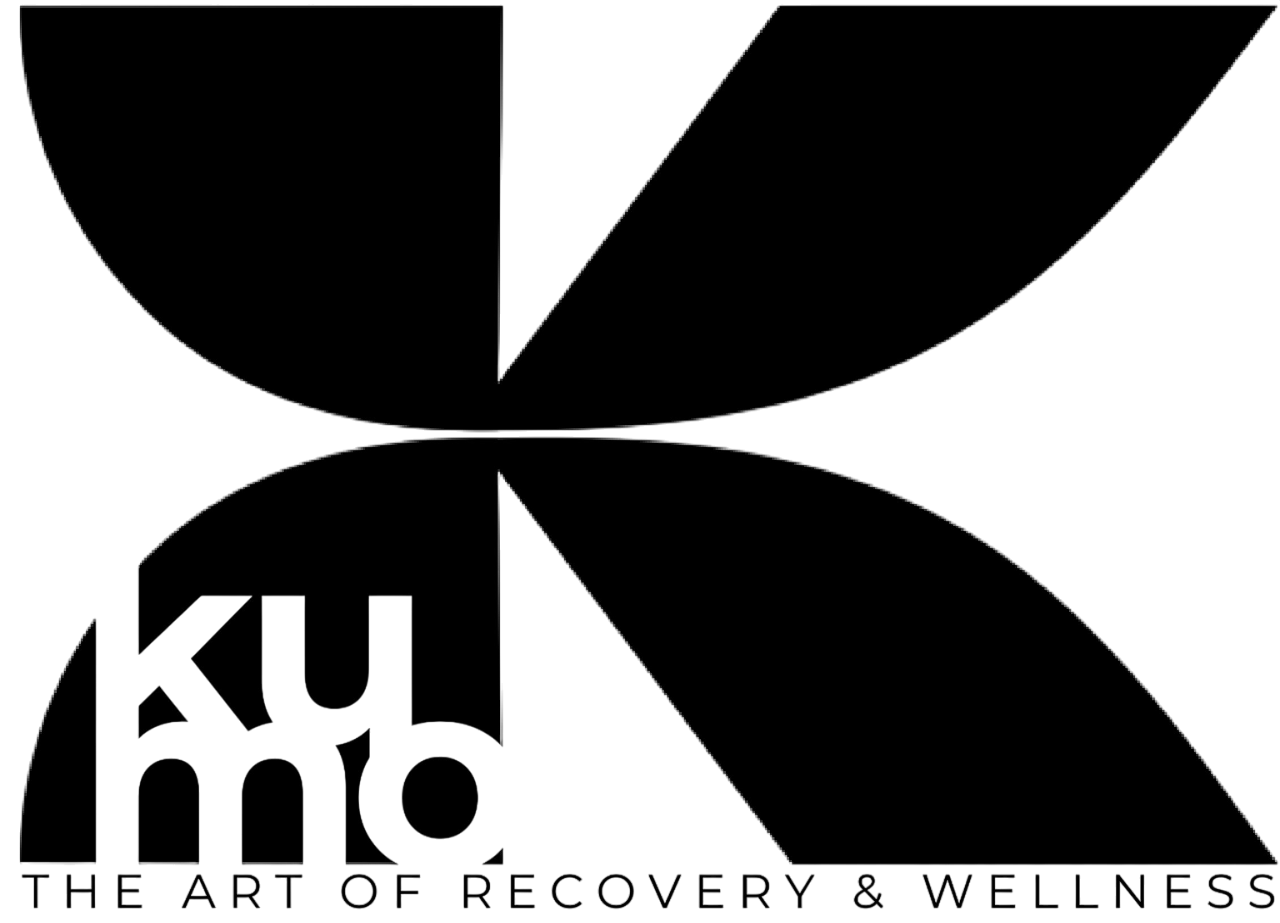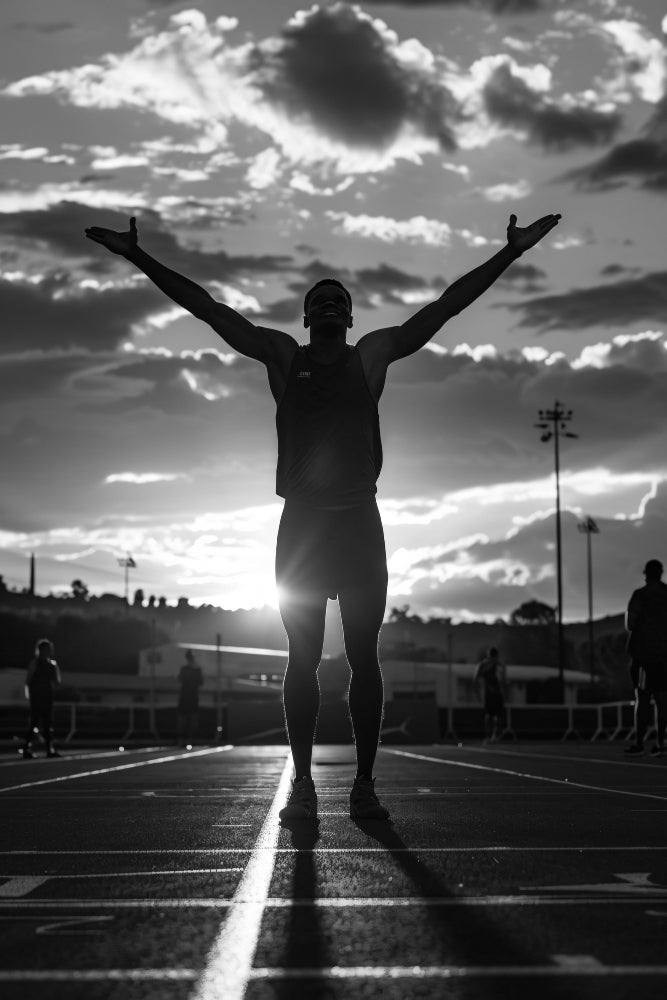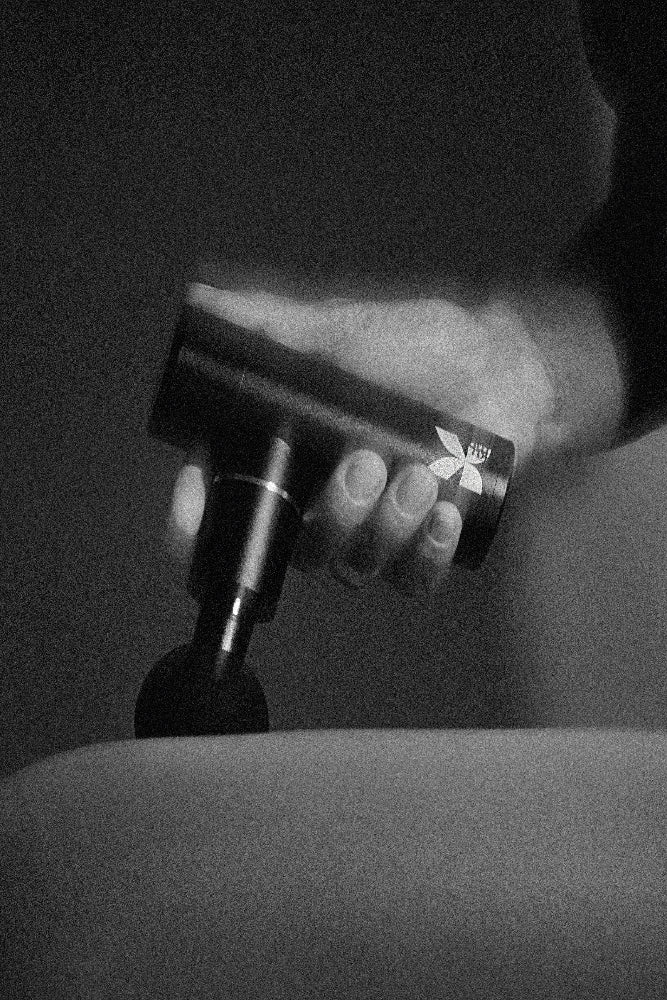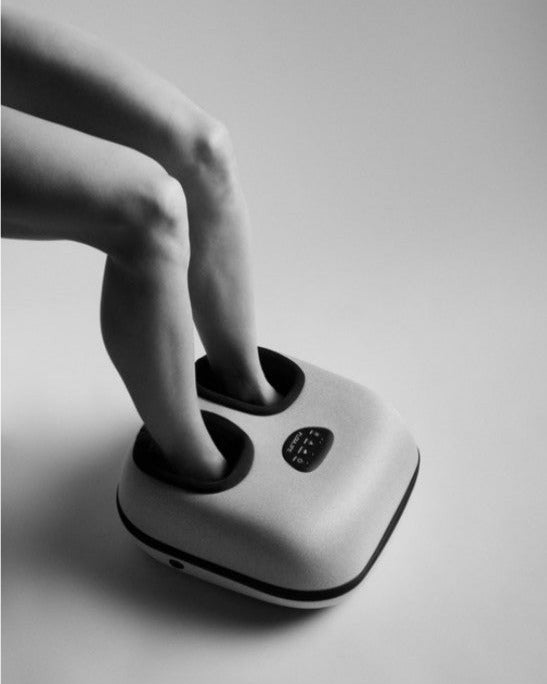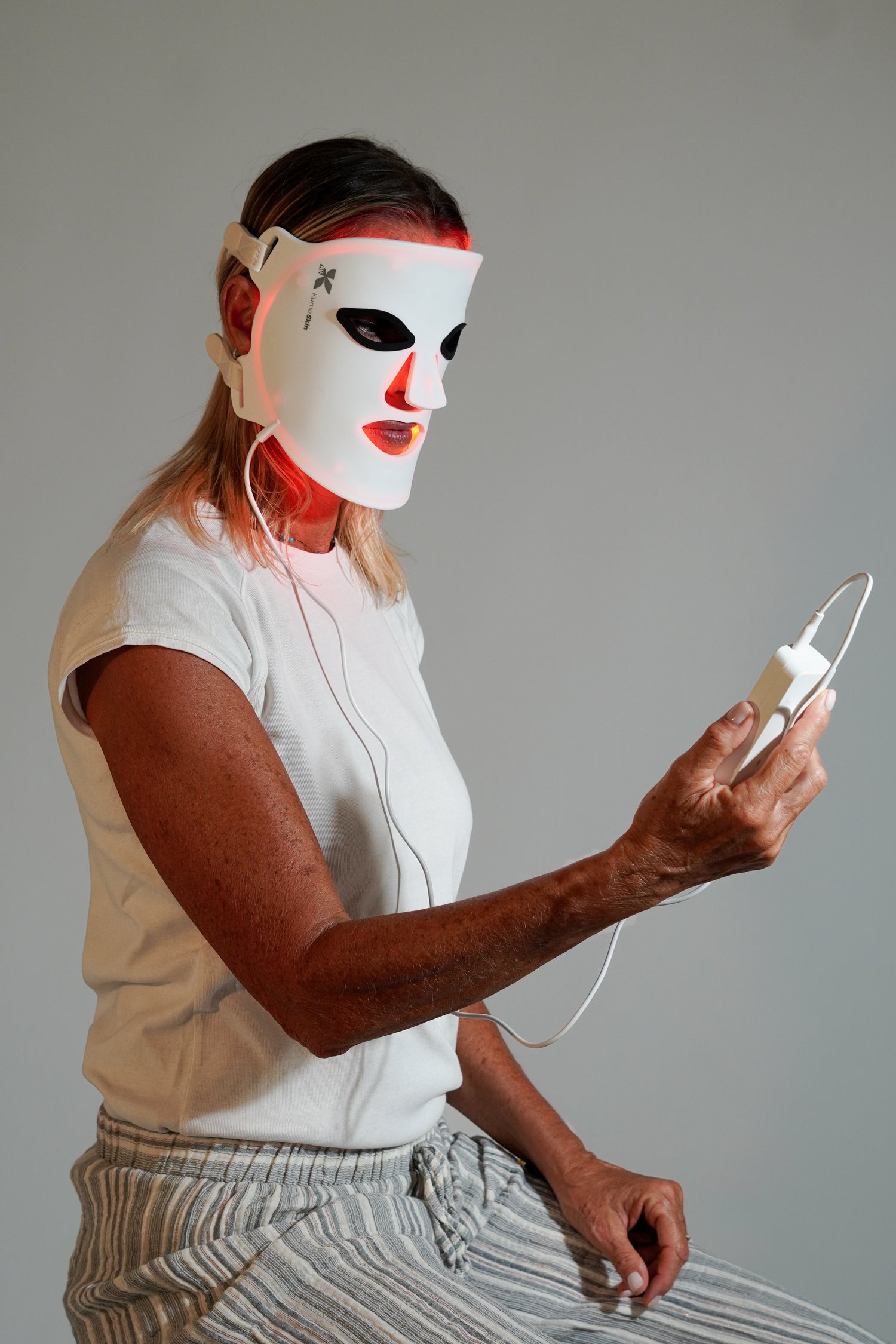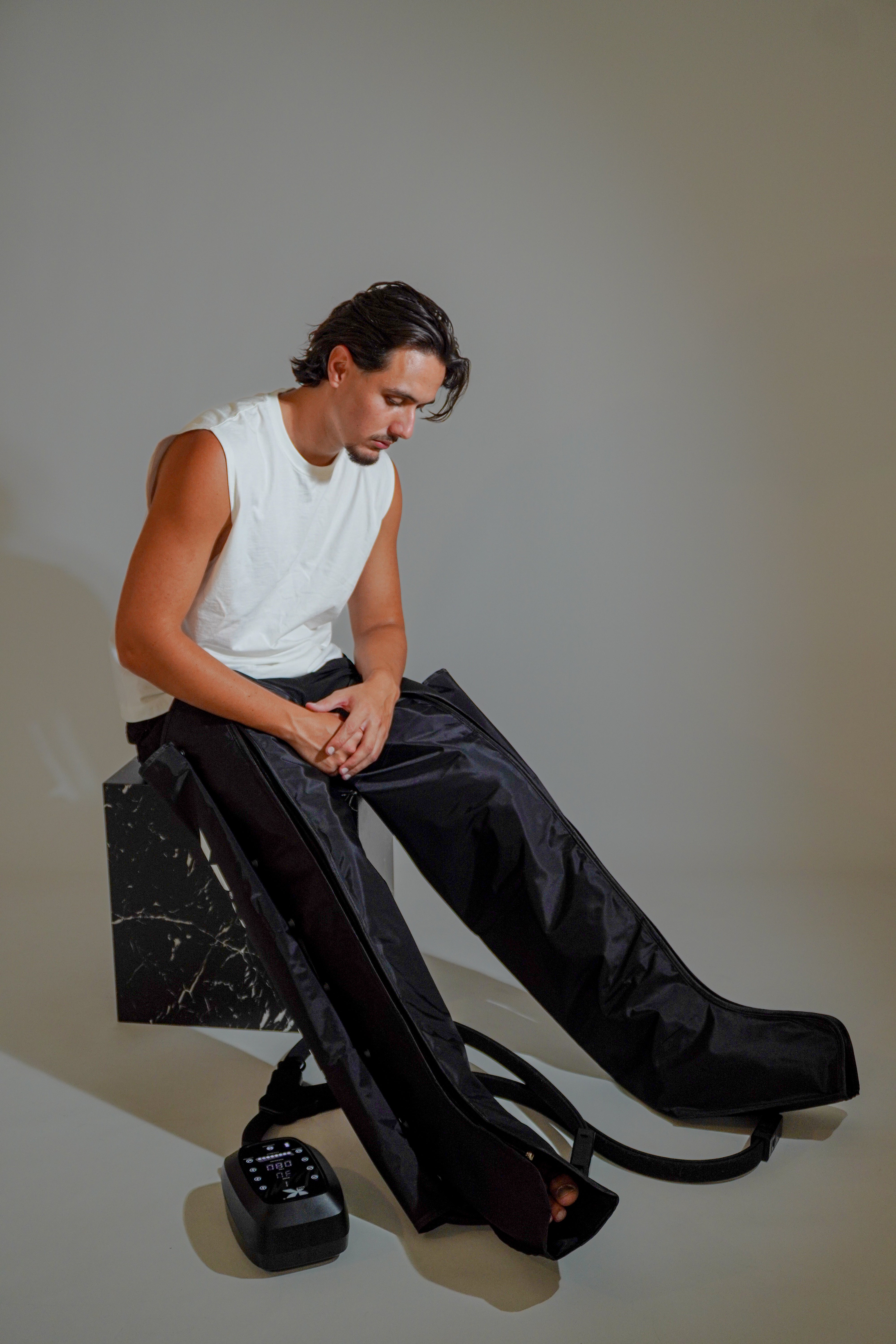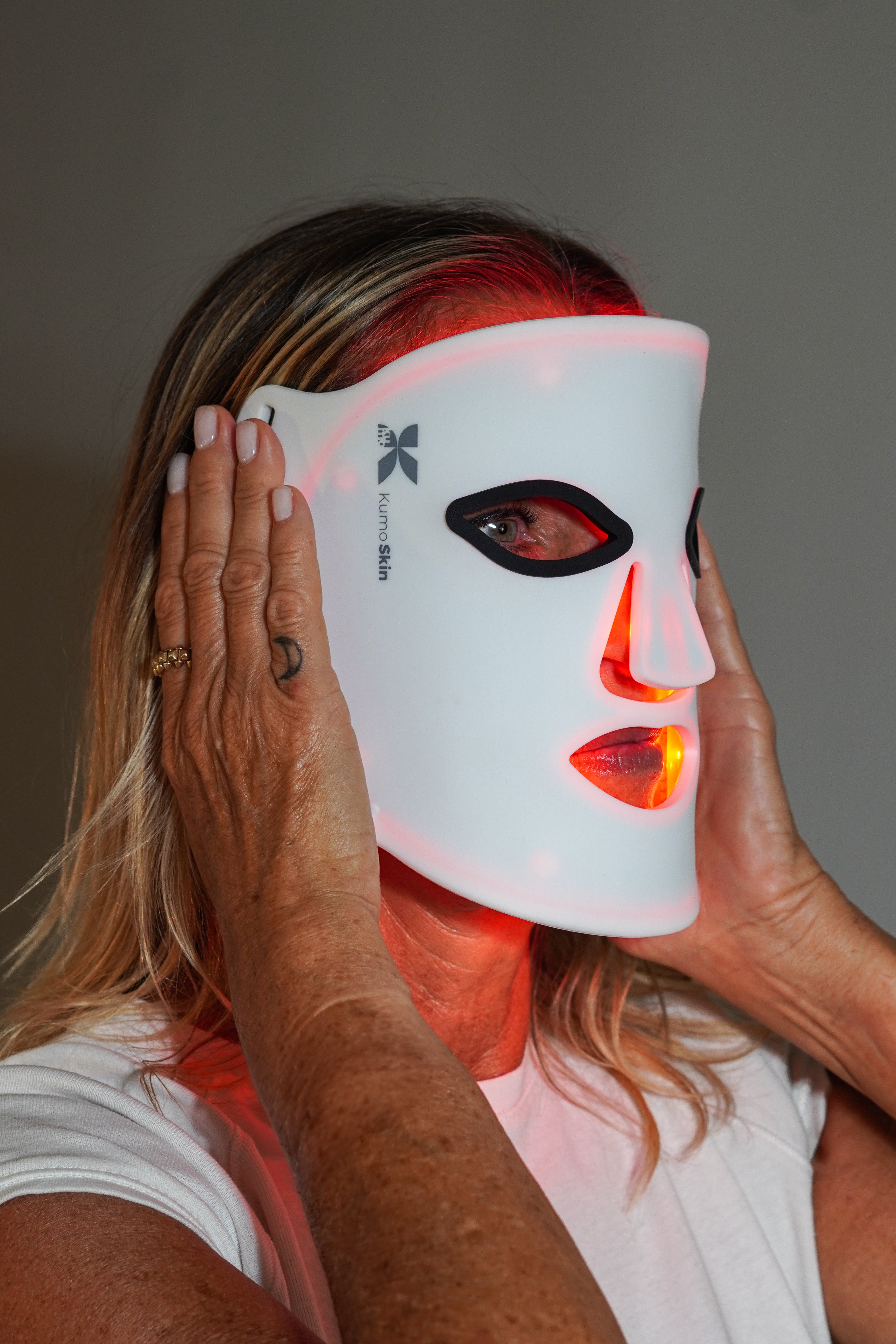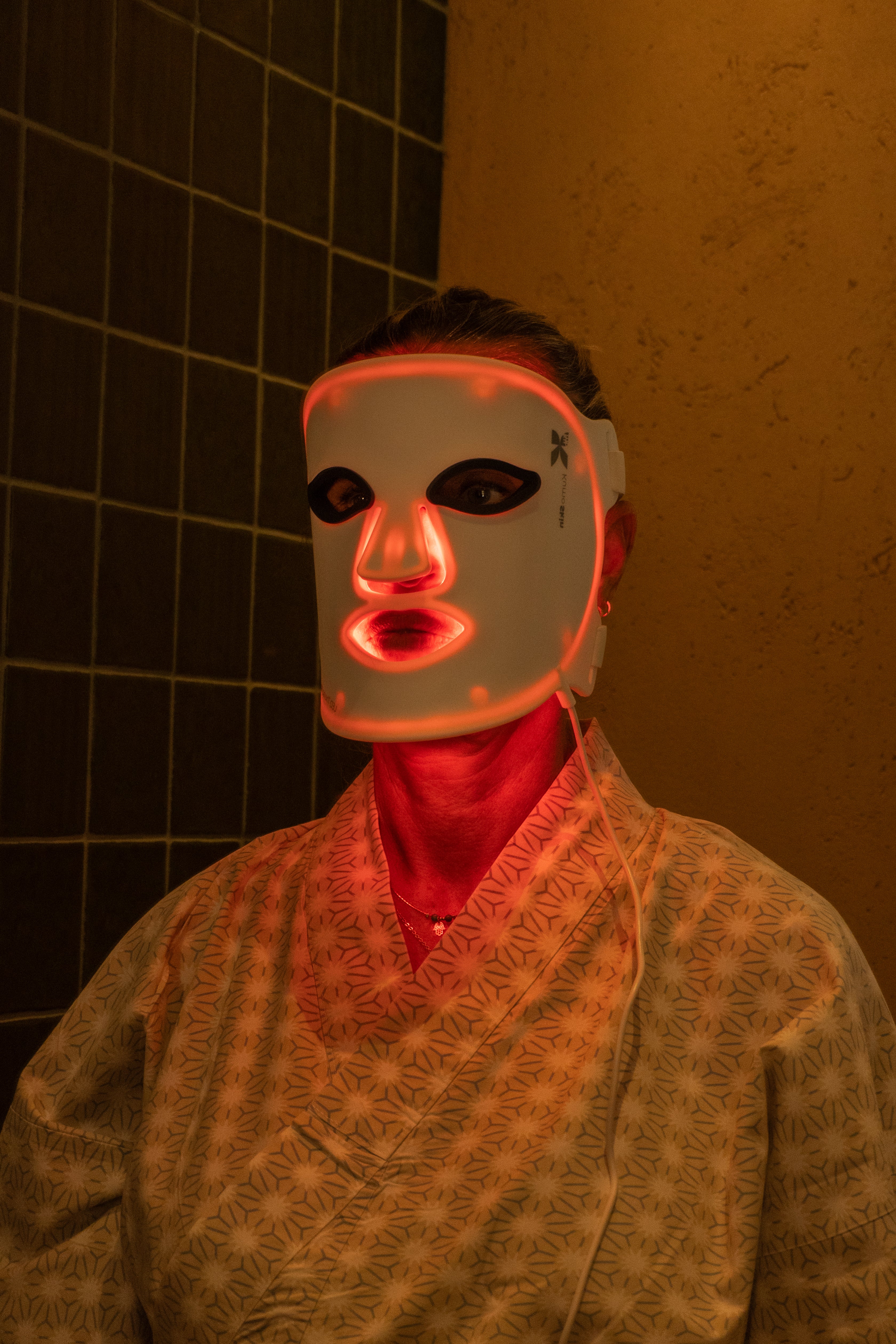LED facial mask for 2025: what it is, how it works, and how to get the most out of it.
The goal is clear: to understand what a facial LED mask offers today, what trends will define it in 2025, and how to use it safely and effectively for skin, recovery, and well-being. Here you'll find scientific foundations, practical protocols, selection criteria, and a routine integrated with other recovery technologies.
Coming soon
- The LED facial mask uses photobiomodulation (red, near-infrared, blue, amber light) to stimulate natural skin processes.
- Trend 2025: Personalization by phototype and objective (acne, wrinkles, tone), greater safety, and improved ergonomics.
- Typical protocols: 10–15 min, 3–5 times/week; 8–12 weeks of consistency and maintenance.
- Safety: Avoid if you are taking photosensitizing drugs or have photosensitivity; protect your eyes.
- Integration: Combine with muscle recovery and sleep with red light and pressotherapy routines for comprehensive results.
| Light | Range (nm) | Main objective | Indicative frequency |
|---|---|---|---|
| Blue | 405–470 | Acne (P. acnes) | 3–5x/week |
| Red | 620–660 | Collagen, wrinkles, tone | 3–5x/week |
| Near infrared | 810–850 | Deep repair, inflammation | 3–4x/week |
| Amber | 580–600 | Brightness, slight redness | 3–5x/week |
Trends 2025: Towards Personalization, Security, and Comprehensive Well-being
Smart masks and personalized protocols
- Algorithms and apps that adjust dose, timing, and wavelength combinations based on skin type (Fitzpatrick I–VI), goal, and progress.
- Multi-modal modes: sequences alternating red/near-IR for firmness and blue/red for acne, with timers and guided sessions.
- Record adherence and results (photos, skin notes) to optimize the plan without overexposure.
Enhanced security and superior user experience
- Diffusers and 3D design that distribute irradiance evenly to avoid hot spots.
- Opaque lenses or certified filters, hypoallergenic materials, and passive ventilation for more comfortable sessions.
- Greater transparency of specifications (irradiance measured in mW/cm² and spectral range) and compliance with standards.
Integration with recovery and sleep
- 360° Approach: Combining evening red light sessions for circadian hygiene and relaxation with other recovery technologies.
- If you work out, alternate with pressure therapy boots to activate circulation and with the KUMOPULSE Air massage gun to release muscle tension.
- Discover the LED light therapy ecosystem for face and body within KUMO.
How it works: Photobiomodulation applied to the skin
The scientific basis in a nutshell
Photobiomodulation is the interaction of light with tissues to modulate cellular processes. Red and near-infrared wavelengths stimulate cytochrome c oxidase in mitochondria, promoting ATP and pro-repair signals; blue light helps reduce C. acnes through its photodynamic effect. Scientific reviews describe benefits for skin rejuvenation and wound healing (Avci et al., 2013). Source .
The key is the dose: enough to activate cellular pathways, without heat or thermal damage.
Wavelengths and expected effects
- Red (620–660 nm): Supports collagen and elastin; improves texture and fine wrinkles with consistent use.
- Near-infrared (810–850 nm): Penetrates deeper; useful for inflammation and tissue recovery.
- Blue (405–470 nm): adjuvant in mild to moderate acne by impacting bacteria and sebum.
- Amber (580–600 nm): luminosity and appearance of slight redness.
For acne, the blue-red combination has shown utility as a support, according to AAD outreach guidelines (accessed 2024). See AAD. Clinical evidence continues to grow and varies by device, protocol, and individual.
Best practices and protocols in 2025
Anti-aging: fine wrinkles, firmness and texture
- What to use: red + near infrared.
- How to: 10–15 min, 3–5 days/week for 8–12 weeks; then maintenance 1–3 times/week.
- Tips: Clean, dry skin, even distance and adjustment, do not squeeze the skin. Combine with gentle moisturizers without photosensitizing ingredients.
Acne and sebum control
- What to use: blue (active acne) combined with red (calm and inflammation).
- How to: Short, consistent sessions; cleanse your skin beforehand and avoid harsh exfoliations on the same day.
- Important: Does not replace medical treatments for moderate/severe acne; consult a dermatologist if breakouts persist. Cochrane review (2016) suggests variable benefit depending on the setting and severity .
Stains and dull tone
- What to wear: amber + red.
- How: medium-term consistency, daily sun protection. Light doesn't replace topical depigmenting agents; it's an ally.
Recovery, stress and sleep
- What to use: Red light in the evening to support relaxation and a pre-sleep routine. A 2012 trial in athletes suggested improved sleep with red light at night in a controlled protocol. PubMed.
- How to: 10–15 minutes after showering or gentle stretching. Combine with LED body light therapy if you're looking for systemic benefits.
Safety, contraindications and common mistakes
When not to use or consult before
- Photosensitivity (lupus, porphyrias) or photosensitizing medication (certain antibiotics, oral retinoids): consult first.
- Open wounds, undiagnosed skin lesions, active infections in the area.
- Post-procedures: Follow medical instructions on when to resume light.
- Personalized questions: you can contact the KUMO team .
Good practices and mistakes to avoid
- Eye protection: Use the included goggles or the built-in blackout eyepiece.
- Dosage and consistency: short, regular sessions are better than weekly marathons.
- Prepared skin: Clean and dry; avoid acids/retinoids just before the session.
- Device hygiene: Clean after each use according to the manual to avoid irritation.
How to Choose an LED Mask in 2025
Specifications that do matter
- Clear spectral range (e.g., 630–660 nm and 810–850 nm) and documented irradiance in mW/cm².
- Homogeneous 180° coverage and independent channels by zone to adapt dose.
Comfort, fit and ergonomics
- Lightweight, adjustable straps, ventilation and hypoallergenic materials.
- Timer, program memory and hands-free mode for easy adherence.
Ecosystem, support and guarantee
- Compatibility with other wellness solutions (red light panels, body-worn devices).
- Clear after-sales support and warranty. Explore the KUMO ecosystem on Kumo Balance .
KUMO Recovery Routine: Skin, Muscles, and Rest
- Night of calm
- 5 min of breathing or stretching, 10–15 min of red light with your mask, light moisturizer.
- Training days
- Short post-shower LED session to soothe skin + discharge with KUMOPULSE Air massage gun .
- Heavy legs: 15–30 min with leg pressotherapy for circulation and relief.
- Weekends
- Complete ritual: facial care, red light and overall recovery with the LED light therapy catalogue.
Recovery isn't just about stopping; it's about choosing the right tools and making them a habit.
Frequently Asked Questions
How long does it take to notice an improvement with an LED facial mask?
Most users notice subtle changes in texture and luminosity after several weeks of consistent use. Typical protocols recommend 3–5 weekly sessions for 8–12 weeks before assessing the results and moving on to maintenance. The response depends on the goal (acne vs. wrinkles), skin type, wavelength combination, and adherence. Don't expect an immediate "filter effect": photobiomodulation is cumulative and works with your biological processes. If in doubt, take periodic photos under the same lighting conditions.
Can I use the LED mask if I have melasma or dark spots?
Red/amber light can help even out skin tone, but melasma is complex and sensitive to light and hormonal stimuli. Prioritize daily broad-spectrum sunscreen and consult with a dermatologist to plan whether and how to integrate LEDs without worsening the condition. Avoid excessive sessions; start with low doses and assess the response. If you are undergoing depigmentation treatments, coordinate dates and products to minimize irritation and photosensitivity.
Is it safe to wear a mask every day?
Many devices support frequent use with short sessions, but more is not always better. Follow the device manual and wear eye protection. Alternate days if you notice redness or dryness, and reduce the duration. If you take photosensitizing medications or suffer from photosensitivity, consult sooner. Dermatological guidelines indicate that safety depends on the total dose (irradiance x time) and eye protection; prioritize moderate consistency over intensity.
Does red light at night help you sleep better?
Red light, lacking intense blue components, is kinder to circadian rhythms than screens or cool white light. Small trials have observed subjective sleep improvements with nighttime red light protocols in athletes (2012 study). Still, each person responds differently. Use it as part of a sleep hygiene regimen: dim screens, maintain relaxing routines, and maintain a cool room temperature.
How is an LED mask different from a red light panel?
The LED mask is optimized for the face: close coverage, ergonomics, and specific programs for facial skin. A panel offers a wider field (neck, décolletage, body) and contactless postures, useful for muscle recovery and overall well-being. If your priority is the face and acne/anti-aging, the mask is practical; if you're looking for broad body or circadian effects, explore the LED light therapy ecosystem. You can combine them according to your goals.
To remember
- The LED facial mask works with your biology: consistency and proper dosage are 80% of the key to success.
- 2025 brings true customization, improved eye safety, and more comfortable ergonomics.
- Combines wavelengths: red/near-IR for firmness; blue/red for acne; amber for radiance.
- Integrate your mask into recovery routines with pressure therapy and massage for comprehensive benefits.
- Prioritize clear specifications and reliable support; avoid overexposure; and maintain device hygiene.
Take the next step: explore the KUMO ecosystem at Kumo Balance or discover specific LED light therapy solutions. If you need help choosing, please contact us .
Recommended sources:
- Review of Cutaneous Photobiomodulation (2013): Fundamentals and Applications NIH/PubMed .
- Blue Light and Acne: Explanation and Considerations by the AAD AAD.
- Red light and sleep in athletes (2012): pilot trial PubMed.
